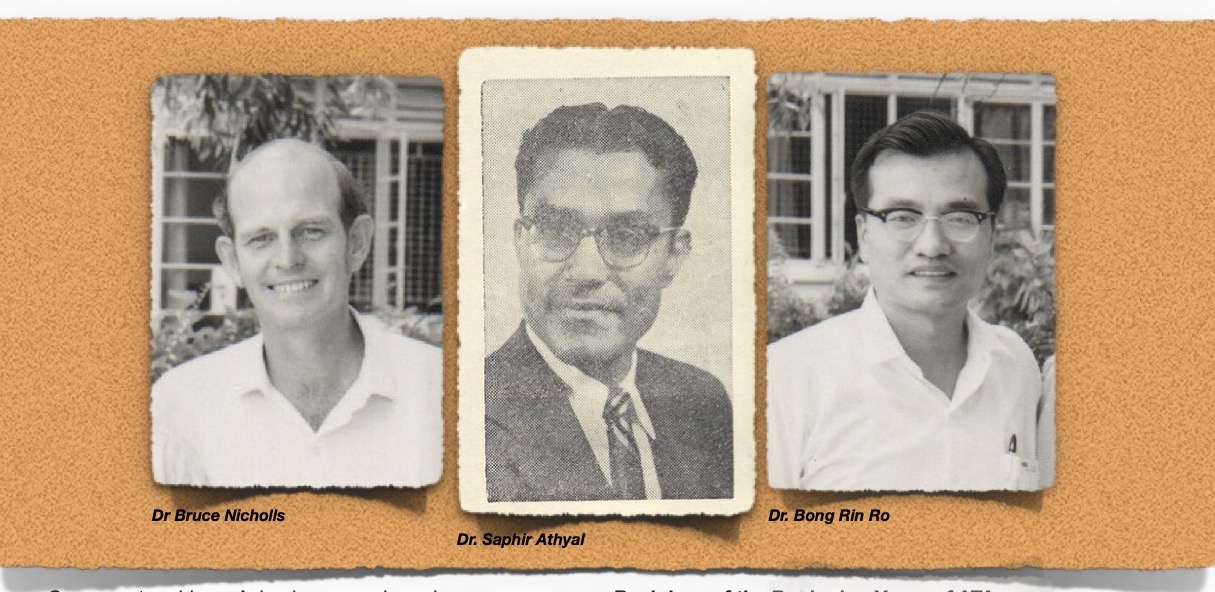
Since ATA just recently celebrated its 50th anniversary, we decided that it would be good to look back at our history and revisit how God has led us and worked to bring us to where we are now. We hope that this piece of recollection will remind you of the faithfulness of our God.
Asia Theological Association is a unique and distinctive example of evangelical cooperation covering a wide area of a number of nations and diverse cultures. Its clear focus is, true and faithful interpretation of the Bible in its historical and cultural settings to determine the content and method of theology and theological training, as they apply to the pluralistic contexts of Asia. It had its genesis in the Asia-Pacific Congress on Evangelism during Nov 5-13, 1968 in Singapore which was a follow-on of the Berlin Congress on Evangelism in 1966.
1968 Singapore Meeting of Theologians, and Its Follow-up
Dr. Saphir Athyal of Union Biblical Seminary in India, organized two informal sessions outside the schedule of the Congress in consultation with its leaders, which was attended by some fifty theologians and theological educators. The group decided to take up the following concrete steps: (1) to organize in each country a theological commission or forum of evangelical theologians and church leaders to serve as a nucleus for developing indigenous theological thinking; (2) to plan on a two-year study program during 1969-70 on the theme, “The Church’s Mission in Contemporary Asia” on national levels with a view to this leading to an All-Asia Consultation; (3) to encourage development and growth of evangelical theological institutions in Asia and Australasia, and work toward closer link and cooperation between them; and (4) to appoint Saphir Athyal to work toward the above objectives.
He took up this new challenge with seriousness. In 1969, he travelled to Malaysia, Singapore, Philippines, Hong Kong, Thailand, and Burma to meet with key theologians and church leaders. On a second trip he visited Japan, South Korea and Taiwan. For these extensive and costly trips, he raised money from different sources. He spent a few days with just about all the evangelical institutions in each country and with its key church leaders. The meetings gave rise to their commitment to work to strengthen training of leaders and cooperation with schools in other countries.
Dr. Bruce Nicholls describes the early developments in New Era New Vision, published by ATA, (pp 11-16). He says, “God’s kairos moment had arrived. On July 5, 1970 Dr. Athyal convened a consultation for three days in Singapore that by the grace of God was to plant a mustard seed destined to become the largest association of theological educators in Asian history. Fifty-one leaders came together from across Asia, New Guinea, Australia and New Zealand” (p. 14). This Consultation dealt with very many issues of theology and theological training of both the leaders and of the laity.
Wholly Asian Vision and Asian Origin
Most evangelical organizations in Asia such as Youth For Christ, Campus Crusade, Evangelical Students Union, Scripture Union, and others like YMCA, SCM, not to speak of classical church denominations, all had their origins in the West, and then ‘imported’ into Asia — praise God for all that they richly contributed to us. But, one special pride and joy we had was that ATA was developed totally by Asian initiatives of those who participated in the Singapore Congress to address Asian issues and needs.
Two outstanding servants of God worked with ATA from its outset. Dr Bruce Nicholls, an Asian in heart, through his arduous efforts and writings impacted evangelical theology and theological education in Asia more than any one person. He initiated Theological Assistance Program (TAP-International) of the World Evangelical Fellowship, and with his encouragement we initially called our organization “TAP-Asia”. But shortly afterwards the group reverted its position realizing it was more factual to name the organization Asia Theological Association true to its Asian origin and development and not be tagged under an international organization.
Dr Bong Ro came into the picture when Dr Athyal got Overseas Missionary Fellowship to second him for us part-time, and from1975 on a full-time basis supported by the Mission.
He served as ATA’s Executive Secretary for two decades and significantly shaped its program and structure, and made it what it became as a great force in shaping evangelical theological education in Asia.
Dr Athyal served as the General Coordinator of ATA for its first ten years. During those early years he coordinated the work of ATA and its different committees and commissions, working with Dr Bong Ro, such as: organizing subsequent four all-Asia consultations; establishing Centers for Advanced Theological Studies (CATS in Seoul); developing core curriculum; producing Asian textbooks; promoting TEE program; and encourage establishing theological societies—much work yet to be done.
Backdrop of the Beginning Years of ATA
During the 60’s and 70’s, several theological institutions of the mainline churches, with their liberal and syncretistic tendencies, were well established and accredited by associations of theological schools in South East Asia, North East Asia and South Asia. The Theological Education Fund of WCC during its third mandate raised over three million US dollars, to train Asian candidates at the doctoral level at liberal centers of learning in the West, and then return to teach in Asia. With its agenda of “contextualization of the gospel”, contexts took precedence over the gospel. Dr Athyal who briefly participated in TEF’s meetings as a consultant, once when asked its Director why not financial assistance for evangelical institutions also, he responded, “You have TAP of WEF for help”. 1972/73 Bangkok Consultation of WCC on ‘Salvation today” further confused the concept of salvation and the gospel.
At the same time most evangelical schools were ill equipped, with pathetic libraries and untrained teachers, but yet offering degrees to attract candidates. A proliferation of such schools started by individuals or churches, mostly by foreign missionaries, with a primary purpose to promote denominational pet doctrines, did not help cooperation between them. Some of them did not want any accrediting body, even ATA, to examine them.
The Global Scene: One Perspective
The 1950’s to the 70’s was a period of strengthening the cause of evangelical theology throughout the world. National evangelical fellowships were established in nine countries of Asia, and WEF established its Theological Commission with Dr Nicholls as its CEO. Meanwhile in Africa the ‘Association of Evangelicals of Africa and Madagascar’ (AEAM) and in Latin America ‘Latin America Theological Fraternity’ (LATF) were formed. Dr. Athyal at the invitation of those bodies travelled extensively to six major countries in Latin America in 1972, and at a later time to six countries in Africa. He gave a series of lectures in each place, and sought to build up mutual understanding and fruitful cooperation between evangelical theological leaders in those continents and in Asia. ATA took initiative in bringing together select leaders from all continents in Seoul in 1982.
Praises and thanks be to God! Our relentless confidence in him is that he who planted ATA and made it to flourish in its multiplied ministries, will enable it to effectively continue in service of its Lord during the challenging future.
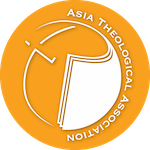
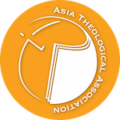
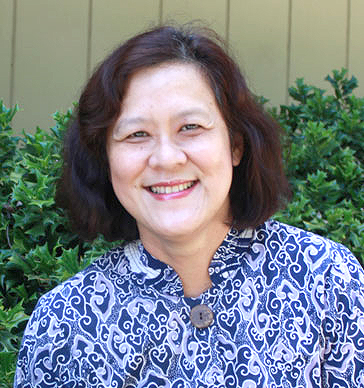
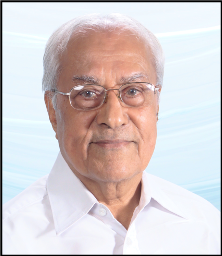
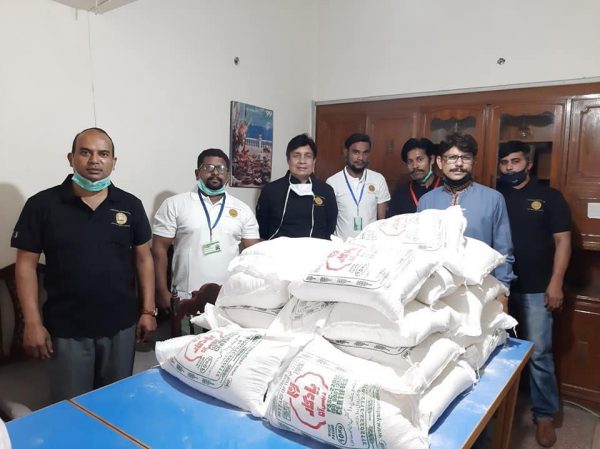
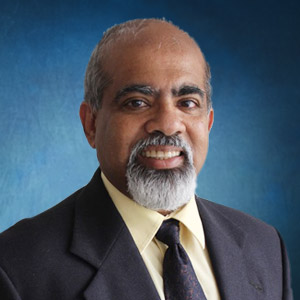
Leave A Comment